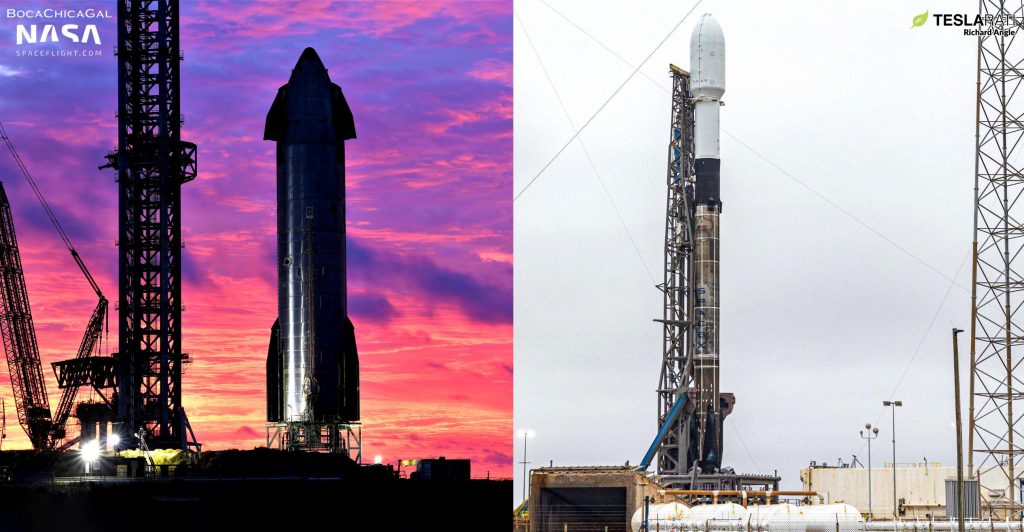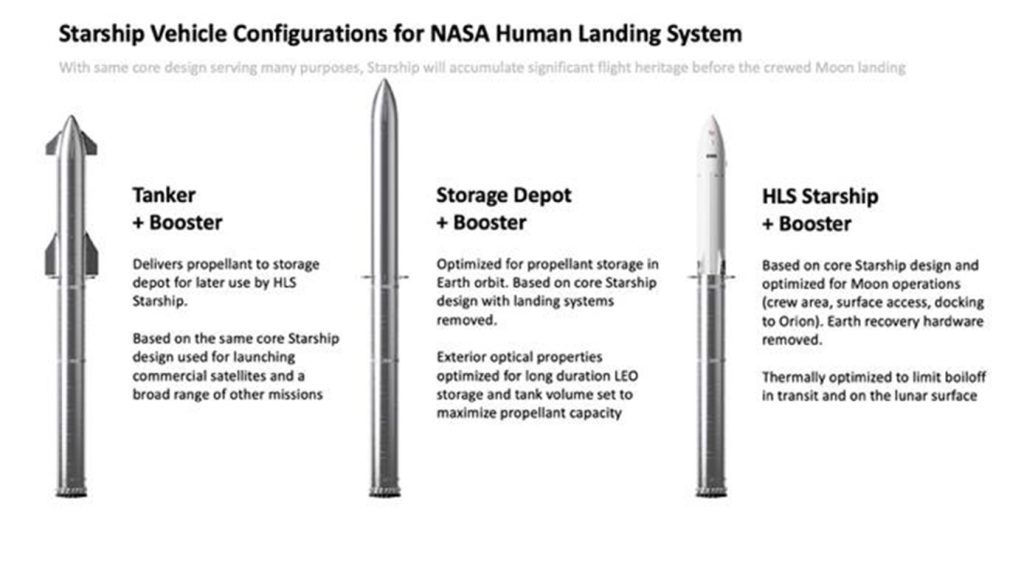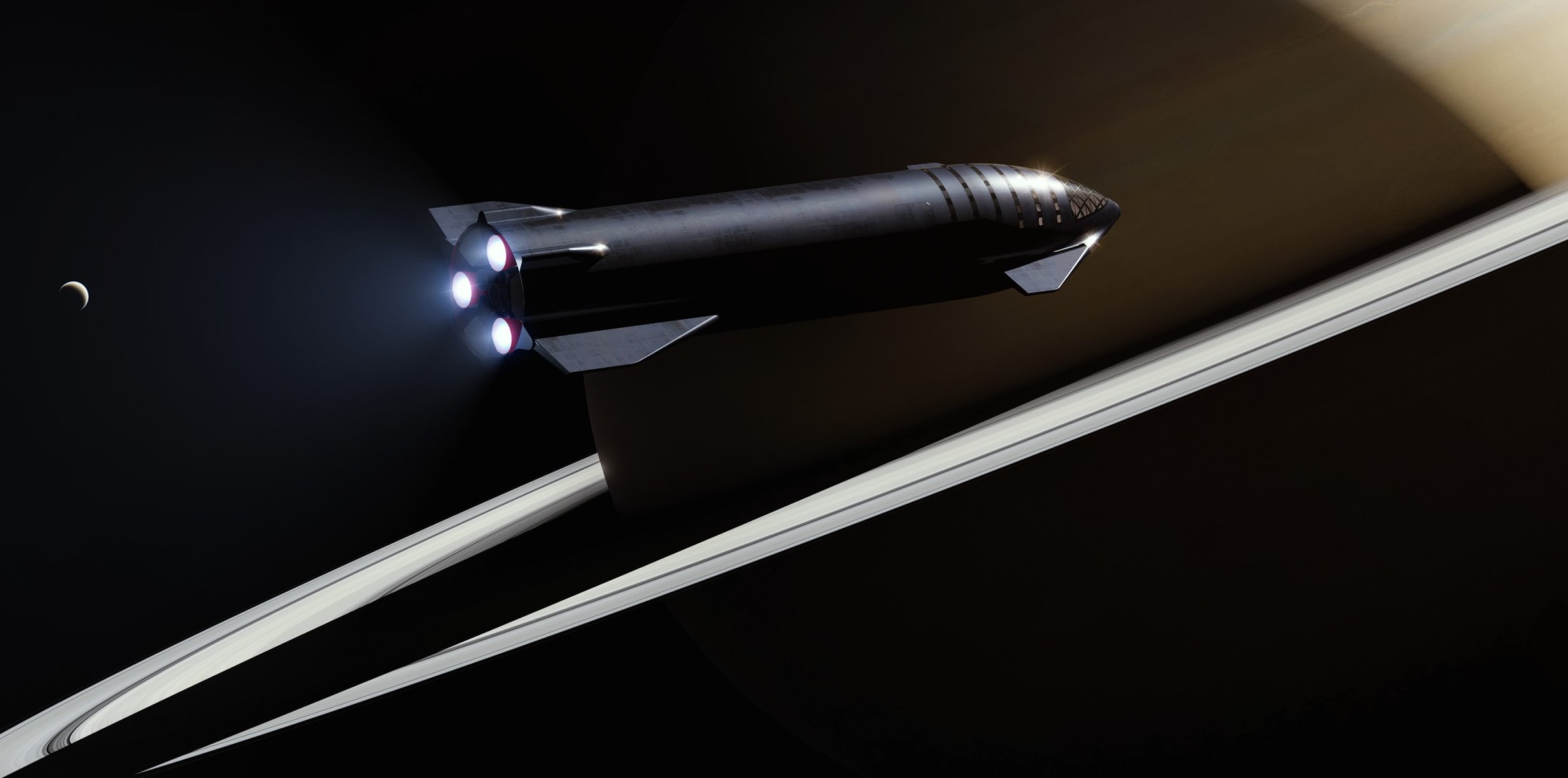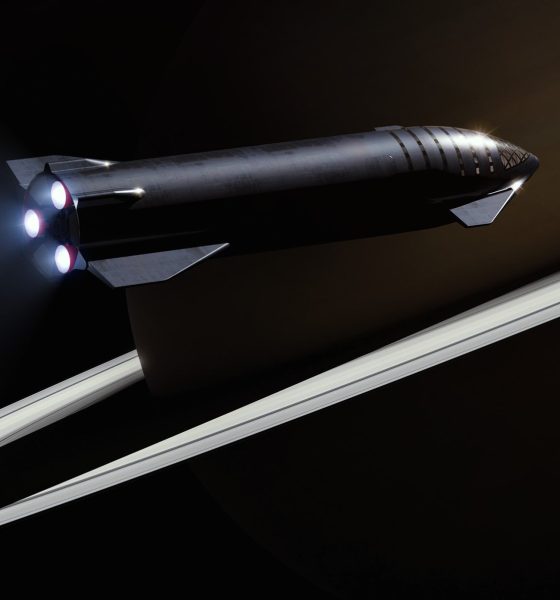SpaceX CEO Elon Musk says that the company could eventually develop an expendable version of its next-generation Starship rocket.
Starship is extraordinarily ambitious. Even before considering the unproven concepts of orbital propellant refilling and full, rapid reusability that are central to the full system, Starship is a beast. The rocket measures 120 meters (~390 ft) tall and is theoretically capable of producing up to 7590 tons (~16.7M lbf) of thrust at sea level. It’s larger, taller, heavier, and more powerful than any other launch vehicle in history. 33 Raptor 2 engines power Starship’s Super Heavy booster – also more than any other rocket.
Once optimized, SpaceX says that Starship can launch up to 150 tons (330,000 lbs) to low Earth orbit while still recovering the orbital ship and suborbital booster for reuse. CEO Elon Musk has stated that Starship reuse will eventually take hours, enabling multiple flights per day for each ship and booster and dropping the marginal cost of each launch to just a few million dollars.
In comparison, SpaceX’s workhorse Falcon 9 rocket uses simpler Merlin 1D engines, has just 10 of those engines to Starship’s 39 Raptors, produces about 10 times less thrust at liftoff, and can launch about 11% as much payload to orbit while expending its upper stage. Even then, Musk reported in mid-2020 that the marginal cost of a Falcon 9 launch was $15 million – impressively low but still a vivid demonstration of just how far Starship has to go.

The update that's rolling out to the fleet makes full use of the front and rear steering travel to minimize turning circle. In this case a reduction of 1.6 feet just over the air— Wes (@wmorrill3) April 16, 2024
Simply ensuring that Starship can reach orbit at all is a major challenge. Successfully recovering Starship and Super Heavy after the fact may be an even bigger challenge and cannot be fully demonstrated until the rocket can consistently reach orbit. SpaceX won’t be able to reuse Starship until it can consistently recover ships and boosters from orbital launches. And there’s no guarantee that early prototypes will be reusable even if they’re recovered.
Until reusability is demonstrated, every “Starship upper stage” will be functionally expendable whether or not Elon Musk wants it to be. Musk likely means that SpaceX may or may not decide to develop a Starship upper stage custom-built for expendable missions. Such a stage would likely take Starship, remove everything extraneous, and reduce its mass as much as possible. Musk has proposed something similar before, noting that SpaceX could develop a “lightened” version of Starship “with no heat shield or fins/legs” for expendable, interplanetary launches.

Further to the contrary, SpaceX’s Starbase factory is already building multiple intentionally-expendable Starships. Ship 26 and Ship 27 feature no thermal protection, have no heat shield tiles, and will not be fitted with flaps, making them impossible to recover or reuse. More likely than not, they will be used to test other crucial Starship technologies like orbital refilling and cryogenic fluid management.
Meanwhile, SpaceX’s multibillion-dollar contract to use Starship to return NASA astronauts to the Moon revolves around a depot ship variant that will store propellant in orbit and cannot return to Earth. The first few Starship Moon landers may also be functionally expendable and only used for one astronaut landing apiece. In short, SpaceX already has extensive plans to build variants of Starship that are either fully expendable or can only be reused in orbit.

Single-use Starships
In early 2023, SpaceX updated the Starship section of its website, revealing that an expendable version of the rocket will be able to launch up to 250 metric tons (~550,000 lbs) to low Earth orbit in a single launch. Saturn V, the next most capable expendable rocket, could launch up to 118 tons (~260,000 lbs) to LEO and cost $1-2 billion per launch. SpaceX publicly advertising the expendable performance of Starship unsurprisingly confirms that the company is considering all of the capabilities its new launch system will offer.
And Starship’s expendable capabilities are significant. Constructed piece by piece over dozens of launches, the International Space Station weighs about 420 tons (~925,000 lbs). Two expendable Starships could launch more usable mass to LEO – truly revolutionary if SpaceX can make Starship launches frequent and routine.

News
Tesla (TSLA) receives “Buy” rating and $551 PT from Canaccord Genuity
He also maintained a “Buy” rating for TSLA stock over the company’s improving long-term outlook, which is driven by autonomy and robotics.

Canaccord Genuity analyst George Gianarikas raised his Tesla (NASDAQ:TSLA) price target from $482 to $551. He also maintained a “Buy” rating for TSLA stock over the company’s improving long-term outlook, which is driven by autonomy and robotics.
The analyst’s updated note
Gianarikas lowered his 4Q25 delivery estimates but pointed to several positive factors in the Tesla story. He noted that EV adoption in emerging markets is gaining pace, and progress in FSD and the Robotaxi rollout in 2026 represent major upside drivers. Further progress in the Optimus program next year could also add more momentum for the electric vehicle maker.
“Overall, yes, 4Q25 delivery expectations are being revised lower. However, the reset in the US EV market is laying the groundwork for a more durable and attractive long-term demand environment.
“At the same time, EV penetration in emerging markets is accelerating, reinforcing Tesla’s potential multi‑year growth runway beyond the US. Global progress in FSD and the anticipated rollout of a larger robotaxi fleet in 2026 are increasingly important components of the Tesla equity story and could provide sentiment tailwinds,” the analyst wrote.
Tesla’s busy 2026
The upcoming year would be a busy one for Tesla, considering the company’s plans and targets. The autonomous two-seat Cybercab has been confirmed to start production sometime in Q2 2026, as per Elon Musk during the 2025 Annual Shareholder Meeting.
Apart from this, Tesla is also expected to unveil the next-generation Roadster on April 1, 2026. Tesla is also expected to start high-volume production of the Tesla Semi in Nevada next year.
Apart from vehicle launches, Tesla has expressed its intentions to significantly ramp the rollout of FSD to several regions worldwide, such as Europe. Plans are also underway to launch more Robotaxi networks in several more key areas across the United States.
News
Waymo sues Santa Monica over order to halt overnight charging sessions
In its complaint, Waymo argued that its self-driving cars’ operations do not constitute a public nuisance, and compliance with the city’s order would cause the company irreparable harm.

Waymo has filed a lawsuit against the City of Santa Monica in Los Angeles County Superior Court, seeking to block an order that requires the company to cease overnight charging at two facilities.
In its complaint, Waymo argued that its self-driving cars’ operations do not constitute a public nuisance, and compliance with the city’s order would cause the company irreparable harm.
Nuisance claims
As noted in a report from the Los Angeles Times, Waymo’s two charging sites at Euclid Street and Broadway have operated for about a year, supporting the company’s growing fleet with round-the-clock activity. Unfortunately, this has also resulted in residents in the area reportedly being unable to sleep due to incessant beeping from self-driving taxis that are moving in and out of the charging stations around the clock.
Frustrated residents have protested against the Waymos by blocking the vehicles’ paths, placing cones, and “stacking” cars to create backups. This has also resulted in multiple calls to the police.
Last month, the city issued an order to Waymo and its charging partner, Voltera, to cease overnight operations at the charging locations, stating that the self-driving vehicles’ activities at night were a public nuisance. A December 15 meeting yielded no agreement on mitigations like software rerouting. Waymo proposed changes, but the city reportedly insisted that nothing would satisfy the irate residents.
“We are disappointed that the City has chosen an adversarial path over a collaborative one. The City’s position has been to insist that no actions taken or proposed by Waymo would satisfy the complaining neighbors and therefore must be deemed insufficient,” a Waymo spokesperson stated.
Waymo pushes back
In its legal complaint, Waymo stated that its “activities at the Broadway Facilities do not constitute a public nuisance.” The company also noted that it “faces imminent and irreparable harm to its operations, employees, and customers” from the city’s order. The suit also stated that the city was fully aware that the Voltera charging sites would be operating around the clock to support Waymo’s self-driving taxis.
The company highlighted over one million trips in Santa Monica since launch, with more than 50,000 rides starting or ending there in November alone. Waymo also criticized the city for adopting a contentious strategy against businesses.
“The City of Santa Monica’s recent actions are inconsistent with its stated goal of attracting investment. At a time when the City faces a serious fiscal crisis, officials are choosing to obstruct properly permitted investment rather than fostering a ‘ready for business’ environment,” Waymo stated.
News
Tesla FSD v14.2.2 is getting rave reviews from drivers
So far, early testers have reported buttery-smooth drives with confident performance, even at night or on twisty roads.

Tesla Full Self-Driving (Supervised) v14.2.2 is receiving positive reviews from owners, with several drivers praising the build’s lack of hesitation during lane changes and its smoother decision-making, among others.
The update, which started rolling out on Monday, also adds features like dynamic arrival pin adjustment. So far, early testers have reported buttery-smooth drives with confident performance, even at night or on twisty roads.
Owners highlight major improvements
Longtime Tesla owner and FSD user @BLKMDL3 shared a detailed 10-hour impression of FSD v14.2.2, noting that the system exhibited “zero lane change hesitation” and “extremely refined” lane choices. He praised Mad Max mode’s performance, stellar parking in locations including ticket dispensers, and impressive canyon runs even in dark conditions.
Fellow FSD user Dan Burkland reported an hour of FSD v14.2.2’s nighttime driving with “zero hesitations” and “buttery smooth” confidence reminiscent of Robotaxi rides in areas such as Austin, Texas. Veteran FSD user Whole Mars Catalog also demonstrated voice navigation via Grok, while Tesla owner Devin Olsen completed a nearly two-hour drive with FSD v14.2.2 in heavy traffic and rain with strong performance.
Closer to unsupervised
FSD has been receiving rave reviews, even from Tesla’s competitors. Xpeng CEO He Xiaopeng, for one, offered fresh praise for FSD v14.2 after visiting Silicon Valley. Following extended test drives of Tesla vehicles running the latest FSD software, He stated that the system has made major strides, reinforcing his view that Tesla’s approach to autonomy is indeed the proper path towards autonomy.
According to He, Tesla’s FSD has evolved from a smooth Level 2 advanced driver assistance system into what he described as a “near-Level 4” experience in terms of capabilities. While acknowledging that areas of improvement are still present, the Xpeng CEO stated that FSD’s current iteration significantly surpasses last year’s capabilities. He also reiterated his belief that Tesla’s strategy of using the same autonomous software and hardware architecture across private vehicles and robotaxis is the right long-term approach, as it would allow users to bypass intermediate autonomy stages and move closer to Level 4 functionality.










